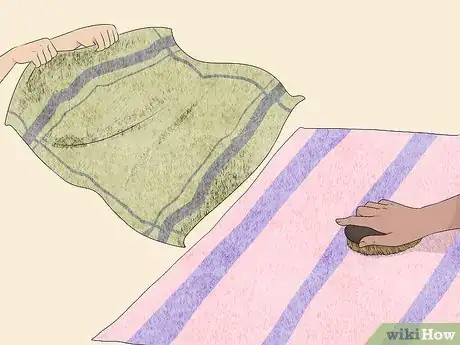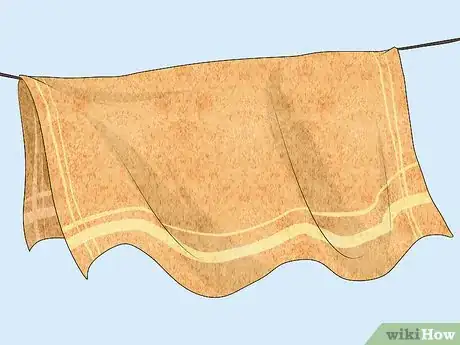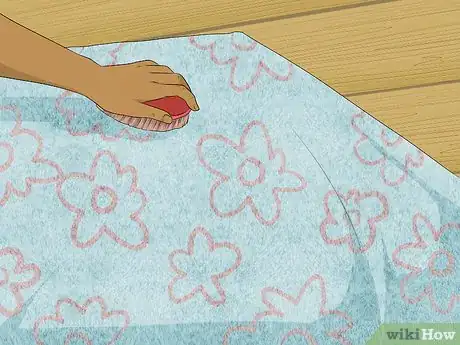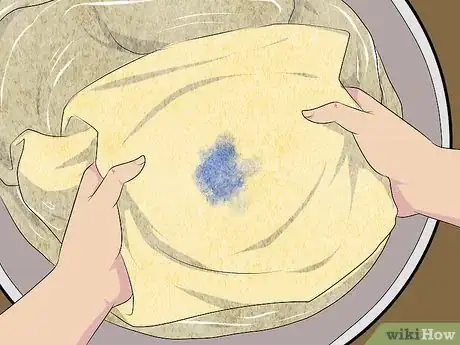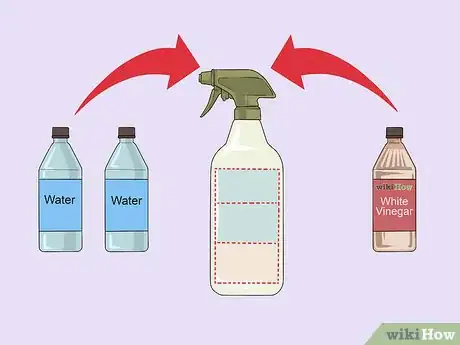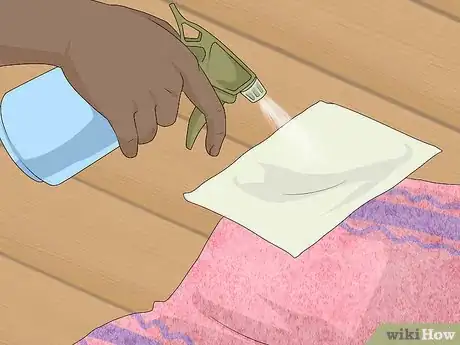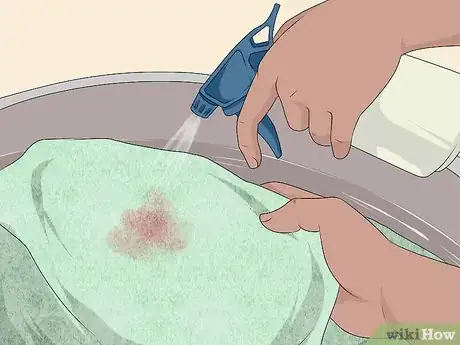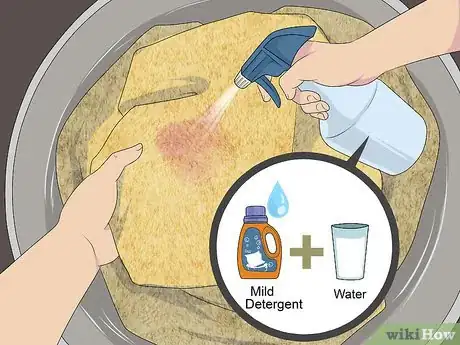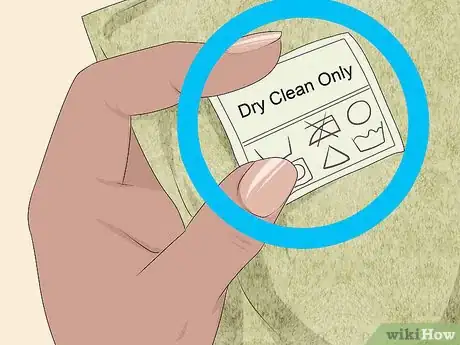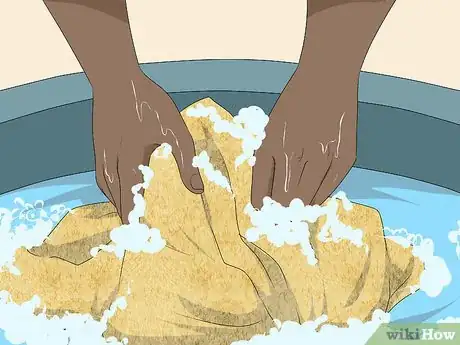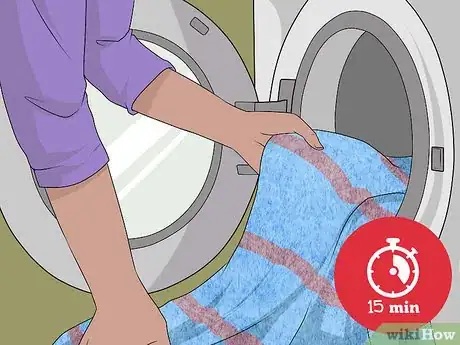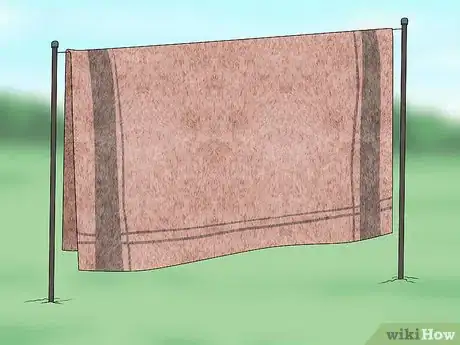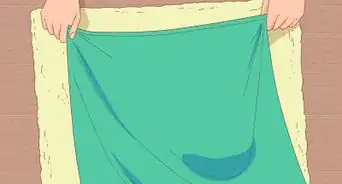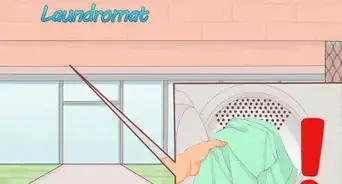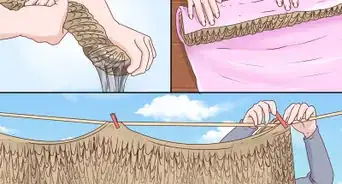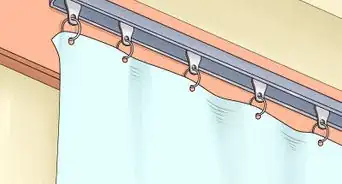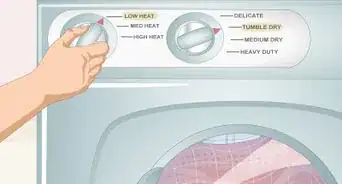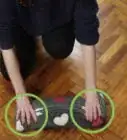This article was co-authored by Michelle Driscoll, MPH. Michelle Driscoll is the Owner of Mulberry Maids, which is based in Fort Collins, Colorado. With five years of experience, her business specializes in cleaning homes and small offices. She holds a Masters in Public Health from the Colorado School of Public Health. Additionally, Mulberry Maids has an A+ rating from the Better Business Bureau.
This article has been viewed 46,494 times.
Wool is pretty temperamental when it comes to washing, which means you can’t just throw your blanket in the washer with your undies. Thankfully, it’s pretty repellant towards dirt on its own, so you may not need to do much at all to remove dry dirt and dust. With liquids, prompt spot-cleaning can often take care of fresh spills and stains. And though wool is often “dry clean only,” some blankets can actually be hand- and/or machine-washed, so you may be able to wash the whole thing if it really needs it.
Steps
Trying Simple Techniques for Dirt and Dust
-
1Start with no-fuss methods. Expect wool to be naturally repellant towards dirt. Also, bear in mind that rigorous washing can actually damage it. Save yourself some time and trouble. Unless something catastrophic happened to your blanket, always try the easiest methods (like air-cleaning and brushing) first to see if they do the job before moving on to something tougher.[1]
-
2Hang it up to air-clean. Choose somewhere indoors with a lot of air circulation to hang it. Set up some fans to get the air moving if needed. Hold your blanket up and give it a thorough shaking to dislodge any dirt or dust clinging to it (or do this outside if you'd rather not vacuum the floor afterward). Then hang it so the air currents can sweep along the wool and blow away the dirt and dust.[2]
- Avoid hanging it up outside if the sun is out. Direct exposure to the sun can cause pronounced fading in colors.
- Do not use heat sources (like space heaters, hair dryers, or even the sun) to speed up the process. Excess heat can dry your blanket out more than desired and damage the fibers.
Advertisement -
3Brush it out instead. Spread the blanket out on the floor and smooth it out so it’s flat. Use a soft-bristle brush for fabrics to brush out dirt. Work lengthwise down the blanket and always brush in just one direction.[3]
- Brushing in multiple directions can weaken the wool fibers and wear your blanket out.
- Fabric brushes can be found with other laundry goods in most stores, or you can find them online.
Spot-Cleaning
-
1Deal with fresh spills and stains ASAP. Expect wool to repel moisture upon contact, but don’t take this for granted. Keep in mind that the fibers will start absorbing the liquid within a few minutes. If you spill anything that might stain your blanket, clean it right away, before the stain begins to set.[4]
-
2Make a cleaning solution. Combine one part distilled white vinegar with two parts water. Fill a spray bottle with your solution. If you’re dealing with a recent spill or smudge, try using seltzer water, since the carbonation’s bubbles can actually encircle and seal off particles and other liquids.[5]
-
3Test dyed blankets before cleaning. If the wool has been dyed, expect your solution to cause the dye to run if it isn’t colorfast. Spray a white cloth with your solution until it’s damp. Then pick a small area of your blanket to test. Dab the blanket gently with your damp cloth. Check the cloth to see if it has absorbed any dye from the blanket. If it has, don’t proceed any further.[6]
- If the blanket isn’t colorfast, it will need to be dry-cleaned.
-
4Spray and blot. Spray the dirty area with your solution. If it’s very soiled, pour enough solution to cover and soak the area. Then use a dry cloth to blot up the solution and dirt. Resist the urge to scrub, since this will weaken the fibers and potentially spread the dirt or stain around over a wider area.[7]
-
5Repeat with mild detergent and water if needed. If your vinegar solution isn’t doing the job, empty your spray bottle. Add a tiny drop of mild laundry detergent and fill the bottle with warm water. Then spray the blanket again and blot with a fresh cloth.[8]
- Do not use anything harsher than mild laundry detergent. If it doesn’t do the job either, your blanket will need dry-cleaning.
- Many brands specifically label their mild detergents as such. They also might advertise them as being safe for sensitive skin and/or babies.
Washing the Whole Thing
-
1Check the care label. If your blanket needs a thorough washing, always follow the manufacturer’s recommendations. Bring it to the dry cleaner if the care label says, “Dry Clean Only.” Otherwise, move on to the appropriate method if it says it’s okay to hand- or machine-wash.[9]
- Washing a “dry clean only” blanket can cause it to shrink and become more abrasive.
-
2Hand-wash by giving it a bath. Add a drop of mild laundry detergent or two to your bathtub. Fill it with enough cold water to cover your blanket. Wait to see if any suds form before placing your blanket in the water. If they do, drain and repeat with less detergent. Then place your blanket in the water and let it soak for 15 minutes or longer.[10]
- Scrubbing or otherwise manhandling the blanket in the water can ruin the fibers, so “hand-washing” shouldn’t be taken too literally. Just let it soak so the water and soap do their thing and dislodge the dirt on their own.
- Too much detergent can remove the fibers’ natural oils, which means they won’t repel dirt as well anymore. This is why you don’t want to see any suds forming when you add water to the tub.
- If the blanket’s still dirty no matter how long it soaks, it will need to be dry-cleaned.
-
3Machine-wash very briefly. As with hand-washing, you don’t want to rough the blanket up too much, so don’t put your blanket in for a full wash cycle. Add just a drop or two of mild laundry detergent to the basin and fill it with cold water. If no suds appear, place your blanket inside. If they do, drain the basin and try again with less detergent. Then, once you place the blanket inside:[11]
- Give it 15 minutes to soak in the soapy water.
- Start the washer’s “gentle” or “delicate” cycle.
- Stop the cycle after two minutes.
- Switch the cycle to “rinse.”
- Run the full “rinse” cycle.
-
4Air-dry. Regardless of which method you chose to wash your blanket, avoid using a machine to dry it whenever possible. Hang it up for the air to dry it instead. Avoid doing so in direct sunlight, however, since this can fade your blanket and damage the fibers.[12]
- Additionally, don’t wring any excess water out of your blanket when you remove it from the water or washer. This can ruin its shape and can cause permanent wrinkles.[13]
- If you’re worried about it dripping everywhere as you move it from one place to another, roll it up inside a large beach towel.
- If you absolutely must put a wool blanket in the dryer, use wool dryer balls to help minimize dryer time, remove static, and keep the blanket soft. You can find these balls at most big box stores, cleaning supplies stores, and major online retailers.
References
- ↑ https://www.pendleton-usa.com/custserv/custserv.jsp?pageName=ProductCare&parentName=CustomerService
- ↑ https://www.remodelista.com/posts/expert-advice-how-to-clean-woolen-blankets-5-experts-tips-from-sharktoothnyc/
- ↑ https://www.overstock.com/guides/how-to-clean-wool-blankets
- ↑ https://www.overstock.com/guides/how-to-clean-wool-blankets
- ↑ https://www.remodelista.com/posts/expert-advice-how-to-clean-woolen-blankets-5-experts-tips-from-sharktoothnyc/
- ↑ https://www.remodelista.com/posts/expert-advice-how-to-clean-woolen-blankets-5-experts-tips-from-sharktoothnyc/
- ↑ https://www.overstock.com/guides/how-to-clean-wool-blankets
- ↑ https://www.overstock.com/guides/how-to-clean-wool-blankets
- ↑ https://www.pendleton-usa.com/custserv/custserv.jsp?pageName=ProductCare&parentName=CustomerService
- ↑ https://www.remodelista.com/posts/expert-advice-how-to-clean-woolen-blankets-5-experts-tips-from-sharktoothnyc/
- ↑ https://www.overstock.com/guides/how-to-clean-wool-blankets
- ↑ https://www.overstock.com/guides/how-to-clean-wool-blankets
- ↑ https://www.remodelista.com/posts/expert-advice-how-to-clean-woolen-blankets-5-experts-tips-from-sharktoothnyc/
About This Article
If you need to clean dust and dirt off of a wool blanket, try shaking it out or brushing it before you attempt to wash it, since rigorous washing can damage the blanket. If you spill anything on your blanket, try to blot it away as quickly as possible. You could also spray it with a combination of white vinegar and water or seltzer water and blot away the liquid. If the whole blanket is soiled, hand-wash it in mild laundry detergent and cold water unless the care label says dry clean only. Hang your wool blanket up to air dry. If you want to learn how to spot-clean your wool blanket, keep reading!
